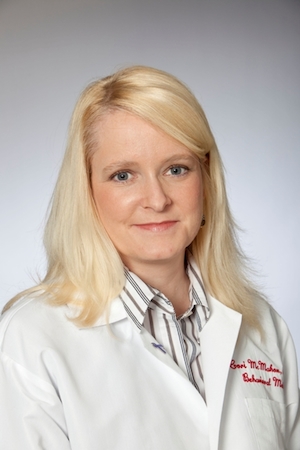 Southern New Jersey's MD Anderson Cancer Center at Cooper is setting up a program for 30 of its breast cancer patients that equips them with Apple Watches to help them self-manage their treatment as well as stay better connected to their care team and each other. The center is working with Wayne, Pennsylvania-based behavioral health technology company Polaris Health Directions on the nine-month feasibility study, which will move into a Phase 2, randomized control trial if it goes well.
Southern New Jersey's MD Anderson Cancer Center at Cooper is setting up a program for 30 of its breast cancer patients that equips them with Apple Watches to help them self-manage their treatment as well as stay better connected to their care team and each other. The center is working with Wayne, Pennsylvania-based behavioral health technology company Polaris Health Directions on the nine-month feasibility study, which will move into a Phase 2, randomized control trial if it goes well.
Polaris is covering the cost of the Apple Watches, which will feature a pink band, and will also equip patients who don't have iPhones with those devices too. Once the study is over, patients will get to keep the devices and be able to continue to participate in the program, which will continue even though the initial study will end in nine months.
Patients will use the Apple Watch to answer quick multiple-choice questions about their mood, symptoms, possible treatment side effects (like headaches or nausea), and more. The provider will also use the device to capture activity and heart rate data to help them anticipate potential issues before they worsen and intervene sooner. While the Apple Watch itself offers no specific sleep tracking features, sleep tracking will be an important part of the study. As the Apple Watch charges at the patient's bedside overnight, patients will keep their iPhone close to them as they sleep -- likely on their bed -- and an app on the smartphone will estimate the patient's sleep quality (probably via the phone's accelerometer).
MD Anderson Cooper’s director of behavioral medicine, Cori McMahon, Psy.D., who is the medical project lead for the cancer pilot, told MobiHealthNews in an interview that her team is tasked with helping cancer patients throughout their patient journey, including right when they are diagnosed, all through active treatment, and into survivorship, which she described as "trying to make sense of how your life is going to change after you've gone through cancer." The feasibility study aims to test how the Apple Watch-enabled program helps patients at all stages of cancer treatment.
"My group, we get referred patients all the time, but we get referred patients at two major times during their cancer experience," McMahon said. "One is when they are first diagnosed, and the other is after treatment is done. That first group, it makes good sense that they get referred to us when they do: They are overwhelmed, shocked, scared, and feeling their mortality flash before their eyes. What happens is they might meet with me or my team once, and very much appreciate that time, but then, unfortunately, we can't often retain them because they are overwhelmed. Suddenly they've got seven doctors' visits a week. They are starting chemotherapy. They are prepping for surgery. And while this is the time as a psychologist I know I need them to dedicate to psychotherapy, most of the time they feel like that's extra and unnecessary. They don't find themselves able to engage."
 Cori McMahon, Psy.D.
Cori McMahon, Psy.D.
When it comes to provider support, McMahon's group of seven will play triage with incoming responses and messages from the patients, but they'll be able to put a nurse or physician in touch with the patient as needed. McMahon said that patients who are through active treatment will also benefit greatly from the program being tested in this pilot.
"That second group that I get are the ones who are done [with] active treatment, and they do have the time and try to muster up the energy to come see us. And the first thing they say is, 'Why didn't I do this all through treatment? Why didn't I seek this support then and here I am now finding myself incredibly distressed. Experiencing anxiety, experiencing depression, experiencing problems with body image. I'm not eating, I'm not sleeping. Why all the sudden after treatment am I having all these issues?' The timeliness of the Apple Watch ... and the ability to have that regular connection with patients is just awesome. As opposed to me having to help patients put out fires after problems already exist."
McMahon said MD Anderson is starting with breast cancer patients for two reasons. The first is that, unfortunately, there is a large number of breast cancer patients. Second, this group has a great variability within it in terms of both treatment options and combinations as well as patient demographics. Patients old and young alike are affected by it.
Longterm, McMahon hopes the Apple Watch program helps patients better understand how they are reacting to treatment in real-time and how their health behaviors affect them during and after their cancer treatment. She cited the common experience that those who try pedometers and discover for the first time a quantified measure of how much they walk each day, often (if they are healthy enough to do so) start to increase their steps as a result.
"It's amazing that happens just because you put a little electronic thing on you to monitor your steps," she said. "For the Apple Watch it's that opportunity magnified by a million. If we can gain insights into health behaviors, health problems, treatment side effects... a lot of our patients get three to four months into chemo before they figure out how their body is reacting. It's not until then that they figure out what to tell their physician. 'Oh, I see that for a couple days after [chemo] I'm incredibly nauseated or fatigued.' It takes patients months to figure this out. If we can help patients figure this out earlier, we are going to improve quality of life and quality of adherence."
McMahon also hopes the program improves doctor-patient communication, or, more generally, patient-care team communication: "Having trust in the medical team and knowing they can get questions answered a little more quickly than usual is amazing. Compare that to how it works now, which even with awesome technology, it is still old school. You have to call, leave a message for a doctor, and wait to get a call back a day later -- unless it is an emergency. This [program] has so much potential and so many implications clinically."
 Tina Harralson, Polaris Health Directions
Tina Harralson, Polaris Health Directions
Mark Redlus, SVP of Labs and Innovation at Polaris, noted that while MD Anderson at Cooper and others have leveraged his company's Polestar platform, which is powering the Apple Watch study, for years, this is the first time it's being used with Apple Watches as well as the first time it includes bidirectional communication between patients and providers. He explained that the group is designing the patient's experience using the Apple Watch to follow the guidelines set out by Apple for developers creating apps for the device. Answering a survey question or a check-in notification will only take the patient 10 seconds or less, Redlus said. Polaris and MD Anderson want to maximize the at-a-glance features of the device to make the program more convenient, less intrusive, and fit more easily into the patient's day.
"That's the whole point, we want to not intrude but be supportive," Redlus said. "And that's the continuum we walk. Phone- or tablet-based applications can walk that line and be more intrusive but the Watch has a more engaging mechanism."
Polaris' Science Director Tina Harralson explained that data collected by the Apple Watches' sensors as well as responses to quick survey questions will trigger either an automated response or intervention from a real live member of the patient's care team. Some of the health content that will be made available to patients in the program will include coping tactics that the patient has created ahead of time with their care team. Data collected and streamed from the Apple Watch could help get those coping tactics to patients at just the right time.
"One of the things we are working on is heart rate," Harralson said. "If heart rate starts to build up really, really fast and they are not active or moving, then we could send a message, like a little glance, that says, 'Do you need your coping card?' or 'Are you stressed? Do you need your coping card?' They could tap 'Yes' and start making the connection between their heart rate really starting to race when their anxiety starts to build."
The Polaris team believes that while this type of program could help build a better connection between patients and their care teams, the potential for patients to better self-manage is another goal.
"This is a real opportunity for introspection," Redlus said. "It is one thing for the clinical side to be able to observe and tailor interventions back to the patient. It's another thing to be able to learn as a patient what is driving you day to day, your depression, your anxiety, your ups, your downs, and really being able to benefit from that persistent introspective engagement."
















